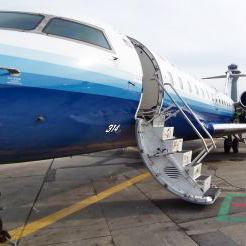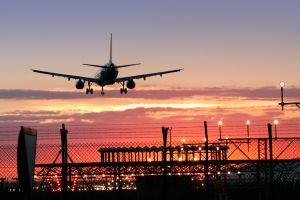Travel News
Navigating Airfares And Frequent Flyer Programs
Nicholas Kralev’s book Decoding Air Travel: A Guide to Saving on Airfare and Flying in Luxury, will be staying in Peter’s carry-on bag for years to come.
Kralev sits down with Peter to share some essential tips from his guide to navigating air fares and frequent flyer programs.
Peter Greenberg: Most people do not know how to read their airline ticket. They think it’s about first class, business class or coach. Most don’t realize there are probably 34 different airfares for any particular class or service.
Nicholas Kralev: One airline can have up to 14 different booking classes in coach alone. Scary isn’t it?
PG: That’s right. I’ve seen tickets with K class, L class, M class. I always wanted to get a P class ticket because that meant I was really in the front of the plane. When you get down to those bottom numbers, like V and W, you’ll be happy if they give you a bottle of water and a bowl of gruel.
NK: Elite status trumps ticket number, right? The third part of my book is all about the frequent-flier game. The only decent way to fly these days is as a top-tier early flier.
 PG: Frequent flyer miles are inherently difficult. They’re the most effective marketing programs ever imagined, which is why they’re celebrating their 30th anniversary this summer. We’re all members. We all like to talk about how many miles we have. Then comes the ordeal of trying to redeem those miles. It’s almost impossible because most people can’t plan so far in advance. If I want to go to Des Moines on a Wednesday at midnight, I got a shot. If I want to go to Hawaii anytime in my lifetime, I may have a problem.
PG: Frequent flyer miles are inherently difficult. They’re the most effective marketing programs ever imagined, which is why they’re celebrating their 30th anniversary this summer. We’re all members. We all like to talk about how many miles we have. Then comes the ordeal of trying to redeem those miles. It’s almost impossible because most people can’t plan so far in advance. If I want to go to Des Moines on a Wednesday at midnight, I got a shot. If I want to go to Hawaii anytime in my lifetime, I may have a problem.
NK: The system has become so complex and frustrating. It’s not only the airfare system, it’s also the frequent-flier system. These loyalty programs are actually making money. In many airlines, these are the only parts of the airlines that are making money. They’re not adding these features and enhancements to be nice, they’re doing them because it makes business sense.
Learn more in the Mileage & Rewards Programs section.
PG: Let me break down how much money we’re talking about. The actual market evaluation of the American Airlines frequent flyer program is over $6 billion. The market capitalization of the airline itself is a little bit over $2 billion. They make more money from the frequent flyer programs than they actually make from operating the airline. When you add it up, they’re also making more money from their ancillary fees than they’re making from operating the airline. For them, in an ideal world, the planes wouldn’t even fly––they’ll just charge for bags and let them sit there.
 NK: The airlines have made things very complex in part because they don’t want most of us to understand the game. I decided that since there is nothing I can do to change the system, I can at least learn about it and try to use it in my favor. I wrote my book to educate people. If you want to travel in comfort and luxury today, you have to be educated. You just cannot go out and snag a ticket on some third-party online travel agency and be done with it. You have to invest a bit of time and effort to really learn how to play the game. Then you need to stop blaming the airlines. The airlines are responsible for what’s happening in the system, but complaining doesn’t do anything. Instead, learn the system and then use it to your advantage.
NK: The airlines have made things very complex in part because they don’t want most of us to understand the game. I decided that since there is nothing I can do to change the system, I can at least learn about it and try to use it in my favor. I wrote my book to educate people. If you want to travel in comfort and luxury today, you have to be educated. You just cannot go out and snag a ticket on some third-party online travel agency and be done with it. You have to invest a bit of time and effort to really learn how to play the game. Then you need to stop blaming the airlines. The airlines are responsible for what’s happening in the system, but complaining doesn’t do anything. Instead, learn the system and then use it to your advantage.
PG: Your chapter on how to identify the lowest fare teaches you to figure out the fare’s conditions. Some of these fare conditions are so draconian that it doesn’t matter that it’s a low fare because you couldn’t qualify for it anyway. Conversely, if you can actually identify the conditions before you find the lowest fare, you can back into those conditions and actually get the lowest fare.
NK: For many people, this sounds too time consuming and complicated. At the beginning it will be. Years ago when I started learning this, it did take time. But if you like travel, this knowledge will benefit you. It’s a great investment. And once you’ve got the hang of it, it’s not that time consuming. Sometimes, I look at a fare basis code, let’s say KAO7CS, and I know exactly what the rules and conditions of the fare are without even looking them up.
PG: That’s why your book is so helpful. I can use it as a reference guide. Once I find out what the booking code is, bingo, now I know how to decipher it, decode it, and figure out if it’s working for me.
By Peter Greenberg for Peter Greenberg Worldwide Radio. For more on Nicholas Kralev, visit his Web site here.
Related Links on PeterGreenberg.com:












